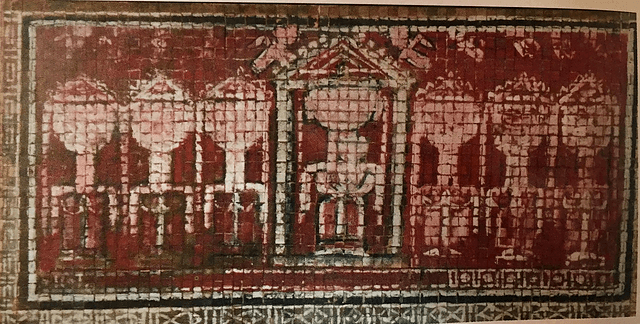Jamini Roy's studio from the
Amiya suffered from Parkinson's and completely lost the use of his hands (as an artist) by 1977, just five years after his fathers death - indicating that his painting abilities must have also gone a while before that. This dispels the second myth that Amiya was making copies of his fathers' works for a couple of decades after his death. On the contrary by every account, he was very close to his father and is very unlikely that he would indulge in using his fathers' name after his death.
The very presence of unfinished paintings in NGMA and Dhoomimal collections confirms this fact.

Unfinished Work - NGMA Collection
To get some perspective into the man's personality, let us not forget how Jamini Roy gave up his profitable career as a portrait painter to discover and pursue his own native style (circa
In around the last two decades of his artistic career, Jamini never denied the fact that he used his son as an assistant. In a conversation with Bhabesh Sanyal, he is supposed to have said that.
He wanted the walls of Bengali homes to have at least one of the pats hanging there. That is why, he said, he had kept the prices of his paintings low. And unless the supply of his paintings increased how could he meet the demand? His paintings, he continued, had a form which he had taught his son. The son filled the simple

Unfinished Work - NGMA Collection
Austin Coates (a close friend) offers another perspective
It was
To summarize, the comment below is a response to an article in India Today dated January 1987. Copies (forgeries) of Jamini Roy happened early as he was a very desired artist, and fakes were being made as far back as the 1980s.
"In April 1987, to commemorate the birth centenary of Jamini Roy several galleries in Calcutta held exhibitions of his paintings. An English daily accused one of the galleries of exhibiting fake Jamini Roy paintings. According to newsmen, the exhibits came from two individuals"
It seems that the myth of the Studio/Factory
Team Prinseps
P.S. Jamini Roy is actually NOT so easy to fake. I plan to be writing an upcoming post clarifying the issue. Feel free to contact me in the interim.
Related: Jamini Roy, The Iconic Figure of Modern Indian Art
References
The Art of Jamini Roy
Jamini Roy - Journey To The Roots - Ella Dutta
Various Conversations